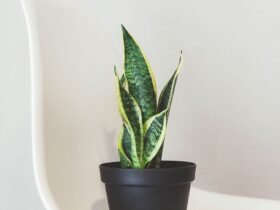It’s the “thin woman Pilates” image—and while every body type should be celebrated, including this one, stereotypes can become harmful when they take on an exclusionary tone.
In other words, when people who have different body shapes don’t feel welcomed in Pilates because they don’t see themselves represented, it can prevent them from enjoying the perks of this workout altogether.
Experts In This Article
- Katrina Tijerina, a fitness enthusiast and content creator whose YouTube channel is dedicated to workouts for larger bodies
- Lindsey Strobel, a comprehensively trained, size-inclusive Pilates student advocate
Here’s more on the root of this stereotype, the harmful implications, and how Pilates is truly for every body type.
How did this stereotype come about?
The association with dancer-like bodies and Pilates may have stemmed at least partially from founder Joseph Pilates’ original New York studio. This studio was located in close proximity to a dance studio and had a crossover in the clientele, says Lindsey Strobel, a comprehensively trained, size-inclusive Pilates student advocate based in the Minneapolis, Minnesota, area.
“Some of those dancers became [Pilates’] protégés, and ‘like calls to like,’” Strobel says. “When people see themselves represented somewhere, it’s an easy assumption that you belong in a space.”
The fitness industry in general tends to market workout classes with messaging that’s skewed toward people in straight-sized bodies (referring to those who wear “standard” sizes offered by companies—small through large), says Katrina Tijerina, a fitness enthusiast and content creator whose YouTube channel is dedicated to workouts for larger bodies.
“Even when there’s conversation around a class being inclusive, it still often isn’t reflective of the body types that you see in a class,” Tijerina says.
“To me, a Pilates body isn’t a look, it’s a behavior. If you’ve got a body and you’re practicing Pilates, congratulations—you have a Pilates body.” —Lindsey Strobel
Why is the “thin woman Pilates” stereotype harmful?
Weight stigmas at the gym have been connected with poor emotional and physical health—and finding an environment that’s inclusive and shame-free is key for those who are living with overweight or obesity when choosing a gym, per a 2016 study in the journal Stigma and Health.
“We rarely see people who look like us actually doing Pilates,” Strobel says. “If we’re brave and give it a try anyway, it’s likely the equipment isn’t sized appropriately to accommodate our bodies.”
Although Pilates modifications can be made for any body size, some instructors may not be familiar with how to teach them.
“Even if we make peace with the physical barriers we encounter, most teacher training programs don’t provide much in the way of education for working with larger bodies,” Strobel adds.
The Pilates industry already lacks diversity in other areas: 96 percent of Pilates practitioners are female, 59 percent are under the age of 55, and 45 percent have a household income of $100,000 or more, per The 2016 Pilates in America Study. Plus, groups like Black Girl Pilates aim to address the lack of racial diversity in Pilates by creating a space for Black students and teachers.
This homogeneity extends to body size, as well. Any type of messaging that portrays a certain “look” can discourage those who don’t fit that aesthetic from participating in the practice.
“Messaging that you can only look a certain way to be a Pilates person is very harmful to people who don’t look like that,” Tijerina says. “Everybody deserves to feel good in their skin and to feel motivated and empowered by movement.”
When a certain class doesn’t work for you because of your size, it’s also easy to put the blame on yourself rather than looking for more inclusive options.
“It was a really arduous and lonely journey to go from blaming myself to recognizing that my body is fine,” Tijerina says. “It’s the industry that needs to address all of these opportunities for improvement.”
Is Pilates really for every body?
Tijerina says she wishes Pilates could be a place where more people felt like they were accepted, regardless of their body size— because the practice can benefit all bodies.
“Even if you’re on a reformer, it’s definitely something that you can do,” Tijerina says. “The moves can be catered to all levels, not just people who are advanced or who have been doing it for a long time.”
When the focus is on physique, the other benefits of Pilates get lost. Its perks include improvements in pain relief (particularly lower back pain), core strength, posture, flexibility, balance and coordination, body awareness, breath control, and mental health and well-being, per the Cleveland Clinic.
“There are so many elements of movement that are beneficial, aside from an aesthetic of a body or trying to achieve a certain size or weight,” Tijerina says.
Despite still clearly lacking diversity in several ways, the Pilates industry is slowly shifting toward more inclusivity, something that Pilates enthusiasts like Strobel notice.
“There is a growing community of Pilates folks—teachers and students—who understand these concerns and are actively speaking up about the changes that are needed to make the practice more size inclusive,” Strobel says.
If you’re in a larger body and want to try Pilates for yourself, look for a support person.
“Ask a friend to go with you, because that always kind of takes away some of that insecurity or lack of confidence of entering a class,” Tijerina says. “That way, you’re not the only person who looks like you or in a class where you don’t know anyone.”
You can also call your local studio or gym ahead of time to ask if the instructors are familiar with modifications for those in larger bodies. By speaking up, you may just encourage Pilates classes to become more accommodating for others, too.
“To me, a Pilates body isn’t a look, it’s a behavior,” Strobel says. “If you’ve got a body and you’re practicing Pilates, congratulations—you have a Pilates body.”
Well+Good articles reference scientific, reliable, recent, robust studies to back up the information we share. You can trust us along your wellness journey.
-
Schvey, N. A., Sbrocco, T., Bakalar, J. L., Ress, R., Barmine, M., Gorlick, J., Pine, A., Stephens, M., & Tanofsky-Kraff, M. (2017). The experience of weight stigma among gym members with overweight and obesity. Stigma and Health, 2(4), 292–306. https://doi.org/10.1037/sah0000062
















Leave a Reply